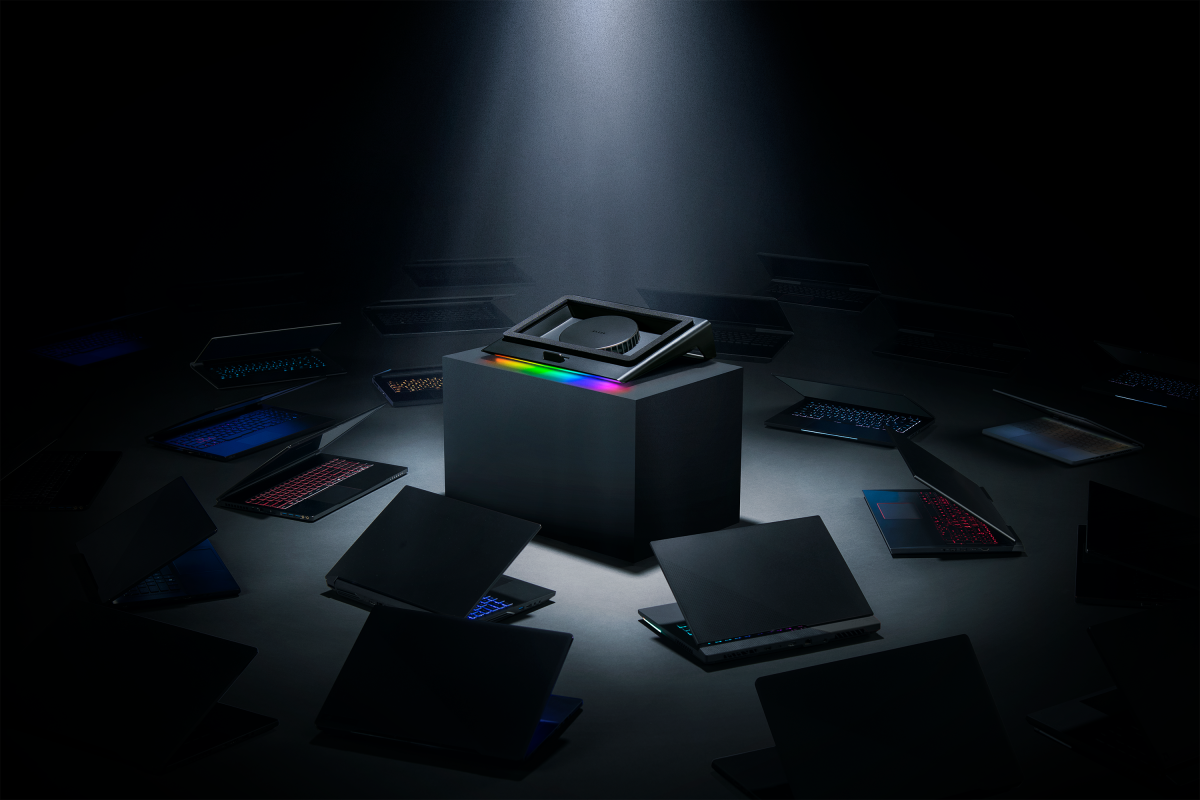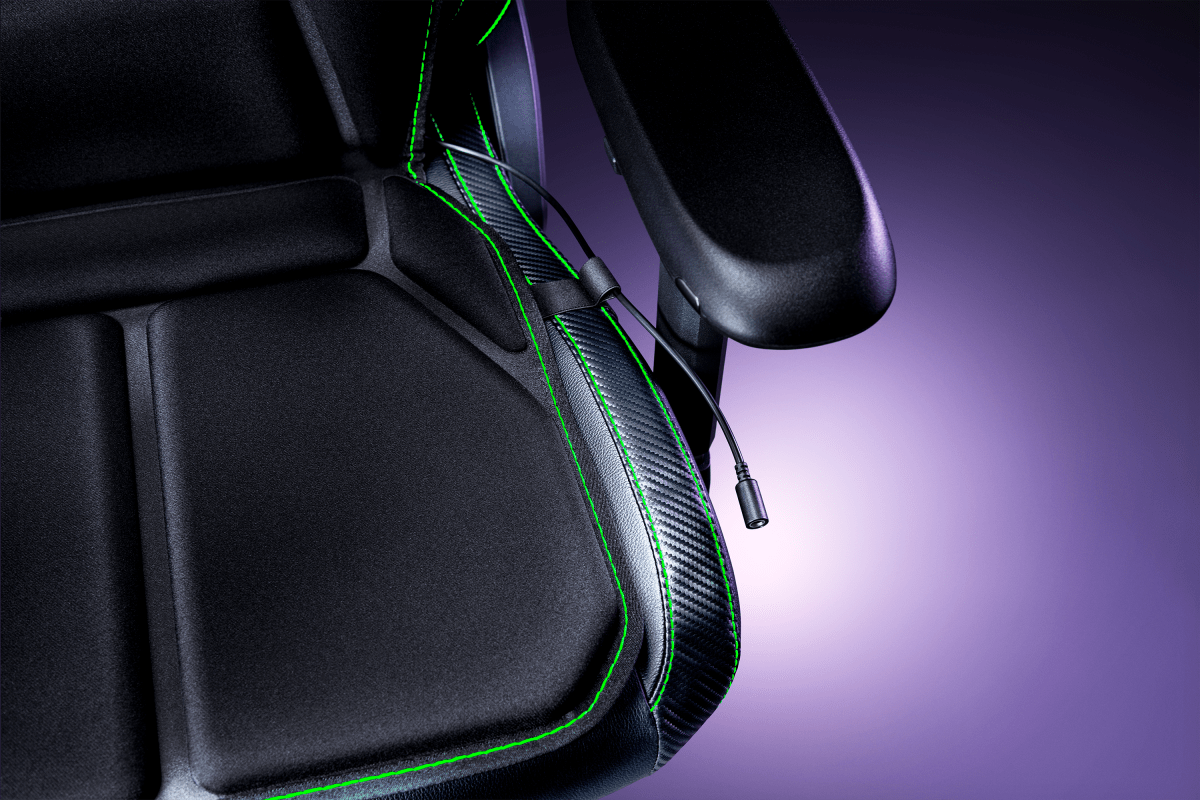- Регистрация
- 17 Февраль 2018
- Сообщения
- 25 396
- Лучшие ответы
- 0
- Баллы
- 2 093
Offline
Laptop cooling pads are dumb. At least, Razer seems to think so. This past weekend, the company announced what it’s calling an “intelligent” cooling solution, one meant to keep powerful laptops running at their peak.
Unveiled during the company’s RazerCon 2024 digital show, the Razer Laptop Cooling Pad features dynamic fan control, a pressure chamber to trap cool air, and a system of swappable frames to support different laptop sizes ranging from 14- to 18-inches. If that sounds premium, it is: This universal laptop accessory runs $150, or roughly five-times the price of most rival products.
But for this cost, Razer promises a superior experience. The center chamber is touted as more efficient at trapping cool air, which is then circulated by a high-speed 140mm fan at up to 2600 RPM. The result: A reduction of up to 18 percent in CPU and GPU temperatures. During the company’s demonstration to media, two identical 15-inch 3080 Ti MSI laptops were tortured with Prime95 and Furmark running simultaneously on loop. On the notebook without a cooling pad, the GPU temperature hovered at 80°C; on the one sitting atop Razer’s Laptop Cooling Pad, the graphics card’s temp stayed at a much breezier 68°C. Whoa! A representative later said that the company has seen as much as a 20°C drop on High settings for some games, as well as lower CPU utilization on a laptop cooled by Razer’s stand.

Razer’s Laptop Cooling Pad is compatible with laptops sized between 14- to 18-inches—not just the company’s lineup.
Razer’s Laptop Cooling Pad is compatible with laptops sized between 14- to 18-inches—not just the company’s lineup.
Razer
Razer’s Laptop Cooling Pad is compatible with laptops sized between 14- to 18-inches—not just the company’s lineup.
Razer
Razer
The pad also incorporates quality-of-life touches—if you turn on smart cooling, the pad will automatically balance performance with noise, so that you don’t have to make the adjustments on your own. You can choose preset or create personalized fan curves in Razer’s Synapse software. A dust filter is included to simplify maintenance.
And of course, in case you were concerned it was missing, Razer includes its Chroma RGB lighting along the front of the pad, which also doubles as a status indicator. You’ll be able to cycle through different lighting profiles and three different smart modes for the fans via buttons on the side of the unit. Additionally, as you might guess, you won’t be using batteries to power this gizmo; instead, expect to plug it into a wall via the AC adapter.

The Razer Freyja connects to your PC via a USB cable with a quick-disconnect feature.
The Razer Freyja connects to your PC via a USB cable with a quick-disconnect feature.
Razer
The Razer Freyja connects to your PC via a USB cable with a quick-disconnect feature.
Razer
Razer
More earthshaking is another of Razer’s reveals—the Razer Freyja, a haptic seat cushion meant to literally rock your world. First unveiled as a CES concept named Project Esther, Freyja will rattle your rear (and back) in response to game actions.
When I took a seat to give it a spin within Hogwarts Legacy, a title optimized for Freyja, distinctive vibrations shook different spots on the pad. Buttons on the side of the accessory let you adjust the strength of the rumble, with more nuanced adjustments per panel available through Razer’s Synapse software. The obvious choice is to let the cushion jostle your jeans at the highest setting. Why else pay $300 for it?
At launch, 20 games will have direct support for the Razer Freyja, including one from a series beloved by PCWorld’s editors—PC Building Simulator 2. (Woo.) In addition to partnering with development teams, Razer is also working on an integration SDK for the Unity, Unreal, and GameMaker video game engines. For titles where a game dev has worked with Razer, the vibration cues sent through Freyja will be more sophisticated and tuned to the world. In all other titles, they’ll be based on directional cues from the game’s audio. You can change the haptic profile assigned to audio cues to match the input, like for game genres like FPS and racing, as well as for movies & TV.
For most gamers, a Razer Freyja will sound excessive—but a chair accessory that offers novel cues, encourages better posture, and kind of gives a light massage could be worth a few hundred bucks. We’ll see.
Unveiled during the company’s RazerCon 2024 digital show, the Razer Laptop Cooling Pad features dynamic fan control, a pressure chamber to trap cool air, and a system of swappable frames to support different laptop sizes ranging from 14- to 18-inches. If that sounds premium, it is: This universal laptop accessory runs $150, or roughly five-times the price of most rival products.
But for this cost, Razer promises a superior experience. The center chamber is touted as more efficient at trapping cool air, which is then circulated by a high-speed 140mm fan at up to 2600 RPM. The result: A reduction of up to 18 percent in CPU and GPU temperatures. During the company’s demonstration to media, two identical 15-inch 3080 Ti MSI laptops were tortured with Prime95 and Furmark running simultaneously on loop. On the notebook without a cooling pad, the GPU temperature hovered at 80°C; on the one sitting atop Razer’s Laptop Cooling Pad, the graphics card’s temp stayed at a much breezier 68°C. Whoa! A representative later said that the company has seen as much as a 20°C drop on High settings for some games, as well as lower CPU utilization on a laptop cooled by Razer’s stand.

Razer’s Laptop Cooling Pad is compatible with laptops sized between 14- to 18-inches—not just the company’s lineup.
Razer’s Laptop Cooling Pad is compatible with laptops sized between 14- to 18-inches—not just the company’s lineup.
Razer
Razer’s Laptop Cooling Pad is compatible with laptops sized between 14- to 18-inches—not just the company’s lineup.
Razer
Razer
The pad also incorporates quality-of-life touches—if you turn on smart cooling, the pad will automatically balance performance with noise, so that you don’t have to make the adjustments on your own. You can choose preset or create personalized fan curves in Razer’s Synapse software. A dust filter is included to simplify maintenance.
And of course, in case you were concerned it was missing, Razer includes its Chroma RGB lighting along the front of the pad, which also doubles as a status indicator. You’ll be able to cycle through different lighting profiles and three different smart modes for the fans via buttons on the side of the unit. Additionally, as you might guess, you won’t be using batteries to power this gizmo; instead, expect to plug it into a wall via the AC adapter.

The Razer Freyja connects to your PC via a USB cable with a quick-disconnect feature.
The Razer Freyja connects to your PC via a USB cable with a quick-disconnect feature.
Razer
The Razer Freyja connects to your PC via a USB cable with a quick-disconnect feature.
Razer
Razer
More earthshaking is another of Razer’s reveals—the Razer Freyja, a haptic seat cushion meant to literally rock your world. First unveiled as a CES concept named Project Esther, Freyja will rattle your rear (and back) in response to game actions.
When I took a seat to give it a spin within Hogwarts Legacy, a title optimized for Freyja, distinctive vibrations shook different spots on the pad. Buttons on the side of the accessory let you adjust the strength of the rumble, with more nuanced adjustments per panel available through Razer’s Synapse software. The obvious choice is to let the cushion jostle your jeans at the highest setting. Why else pay $300 for it?
At launch, 20 games will have direct support for the Razer Freyja, including one from a series beloved by PCWorld’s editors—PC Building Simulator 2. (Woo.) In addition to partnering with development teams, Razer is also working on an integration SDK for the Unity, Unreal, and GameMaker video game engines. For titles where a game dev has worked with Razer, the vibration cues sent through Freyja will be more sophisticated and tuned to the world. In all other titles, they’ll be based on directional cues from the game’s audio. You can change the haptic profile assigned to audio cues to match the input, like for game genres like FPS and racing, as well as for movies & TV.
For most gamers, a Razer Freyja will sound excessive—but a chair accessory that offers novel cues, encourages better posture, and kind of gives a light massage could be worth a few hundred bucks. We’ll see.
